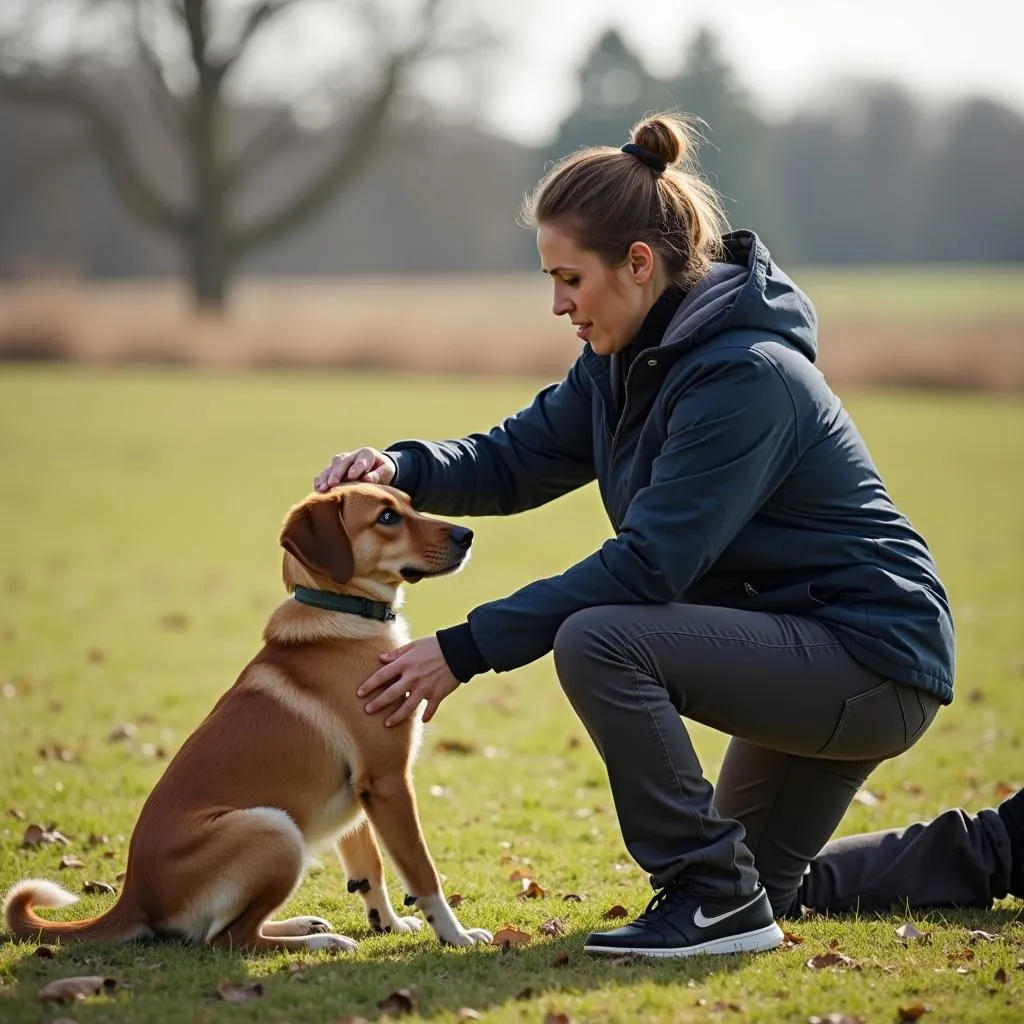“Con chó cắn phải đập cho chừa!” – This old Vietnamese proverb reflects the traditional view of discipline when it comes to dogs. While it might seem harsh, the sentiment emphasizes the importance of teaching your furry friend right from wrong. But how do we actually do this? Enter the world of dog correction – a method that often sparks debate but can be crucial in shaping a dog’s behavior.
Understanding Dog Correction
Dog correction is a training method that uses a negative consequence to discourage unwanted behaviors. It’s often used in conjunction with positive reinforcement, but the key difference lies in the negative impact that follows an undesirable action.
Imagine this: Your dog jumps on the counter for a tasty treat. You quickly say “No!” and gently push him down. This immediate consequence, along with a verbal cue, helps him understand that counter-surfing isn’t allowed.
Types of Dog Correction
There are several different types of dog correction, each with its own approach:
Verbal Correction:
This involves using a firm voice and clear verbal cues to let your dog know they’ve done something wrong. Examples include “No!”, “Off!”, or “Stop!”.
Physical Correction:
This involves a physical action to discourage unwanted behavior. It’s important to note that physical correction should be done gently and never involve punishment or hitting. A simple redirect, such as pushing your dog off the counter, or a quick tug on the leash, can be effective.
Environmental Correction:
This involves modifying the environment to prevent unwanted behavior. For example, if your dog jumps on the couch, you might put a barrier in front of it.
Consequences:
These are natural or created consequences that naturally follow unwanted behavior. For example, if your dog barks at the door, you might ignore him, and he’ll learn that barking doesn’t get him attention.
When to Use Dog Correction
Dog correction is best used in conjunction with positive reinforcement. It’s most effective when used immediately after an unwanted behavior and should always be gentle and consistent.
Remember, dog correction is not about punishment. It’s about teaching your dog what you want them to do, not what you don’t want them to do.
Dog Correction: A Balance of Methods
“Canh nhà thì chó, can tội thì người” – this Vietnamese saying highlights the trust we place in dogs to protect our homes. But just like with anything, balance is key. While dog correction can be a useful tool for training, it’s crucial to understand that it’s not always the best approach.
Frequently Asked Questions
Many dog owners have questions about dog correction:
Q: Is it okay to use a shock collar for dog correction?
A: Shock collars can be controversial. While some dog trainers use them, others strongly oppose them. The debate centers around potential harm and ethical considerations. It’s important to weigh the pros and cons carefully and seek professional advice before using a shock collar.
Q: When should I start using dog correction?
A: It’s best to start using dog correction once your dog has a basic understanding of positive reinforcement commands. This will ensure they understand what you expect from them and that correction is used as a helpful tool for learning, not as a punishment.
Q: What are some alternatives to dog correction?
A: Alternatives to dog correction include positive reinforcement, distraction, and redirection. These methods focus on rewarding good behavior and encouraging desired actions rather than focusing on punishment.
Seeking Professional Guidance
“Chó nhà dạy được, người nhà thì khó” – This Vietnamese proverb emphasizes the importance of training and guidance. If you’re struggling with dog training and have questions about correction, don’t hesitate to reach out to a professional dog trainer. A qualified trainer can assess your dog’s needs and provide personalized guidance.
 Dog correction techniques
Dog correction techniques
Remember:
Dog correction is a complex topic. It’s important to approach it with compassion, understanding, and a commitment to your dog’s well-being. By using dog correction responsibly and in conjunction with positive reinforcement, you can help your furry friend learn and grow into a well-behaved and happy companion.
Ready to explore more about dog training? Check out our website for helpful articles and resources on dog training norfolk.
Leave a Reply
You must be logged in to post a comment.